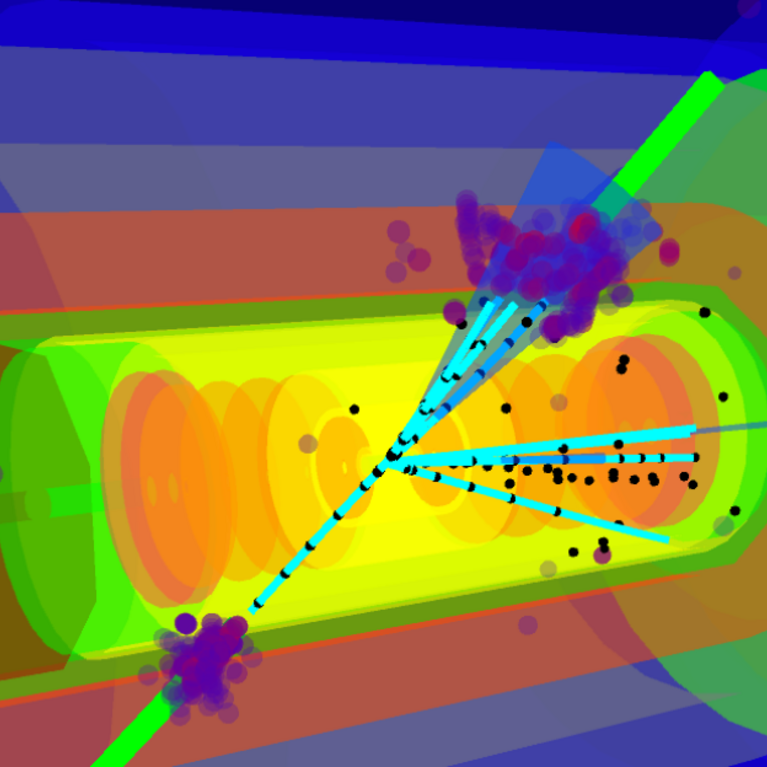UCR CECI: Developing Instruments to See the Dark Universe in a New Light
WEBSEDGE SCIENCE - Our ability to observe the universe has gone hand in hand with the advances in technology we’ve made to do so. To understand the mysteries of the universe, we’ve gone from visible light, to ultraviolet and infrared, x-ray and gamma-ray. Today, as cosmologists begin to detect even more opaque phenomena like gravitational...
By WebsEdge Science |
Bringing the Beautiful Data of the Electron-Ion Collider to Life
BROOKHAVEN NATIONAL LABORATORY - Pixels and particles collide, thanks to a pioneering student’s idea to mesh the world of video game technology with real-world physics. Sean Preins, a doctoral student in the Department of Physics and Astronomy at the University of California, Riverside (UC Riverside), has developed a customizable virtual reality program called VIRTUE, or...
By Amber Aponte | Brookhaven National Laboratory |

When particles collide: Professor Miguel Arratia talks physics and the Electron Ion Collider
Miguel Arratia, Assistant Professor of Physics at the UC Riverside College of Natural & Agricultural Sciences (CNAS), conceives and designs detectors for experiments for the Electron Ion Collider (EIC) in Upton, NY, which was developed to uncover the mysteries that bind the atomic nucleus together. The U.S. Department of Energy Nuclear Science Advisory Committee has...
Dark Matter Helped Solve This Milky Way Mystery
MSN - One of the most extensively studied stellar streams within the galactic halo of the Milky Way is the GD-1 stellar stream. It is known for its long, thin structure and distinctive features. It exhibits spur and gap features that have puzzled scientists for many years. A team of researchers led by Hai-Bo Yu...
By Emily Chan | MSN |
Dark matter may have caused a baffling break in this star stream
SPACE.COM - A perplexing "break" in a stream of stars around the Milky Way could be the result of dark matter — that is, if the mysterious cosmic stuff interacts with itself. The feature in question is in the GD-1 stellar stream, a thin group of stars moving together on a shared trajectory through the...
By Robert Lea | Space.com |
Explaining the mysterious drone sightings from Riverside County to east coast
KESQ - Meanwhile the Department of Homeland Security and Federal Bureau of Investigation continue to press there is no evidence of reported drone sightings posing a national security or public safety threat from a foreign nexus. Despite that, the FBI and DHS are deploying drone detection technology and infrared cameras to probe whether the drones...
By Garrett Hottle | KESQ |
New 'gold-plated' superconductor could be the foundation for massively scaled-up quantum computers in the future
LIVE SCIENCE - A new superconductor material could greatly improve the reliability of quantum computers, scientists say. The electrical resistance of materials typically decreases as they are cooled. But some materials, called superconductors, maintain a gradually declining electrical resistance until they are cooled to their critical cut-off temperature, at which point their resistance becomes zero...
By Peter Ray Allison | Live Science |
Scientists Explored Hydrogen Forests—and May Have Uncovered Hidden Dark Matter
POPULAR MECHANICS - Scientists have combined a powerful simulator with data about the universe to explain a large discrepancy in our understanding. The simulation suite, called PRIYA, debuted last year and is helping scientists study a special phenomenon of hydrogen atoms in deep outer space. Now, in a new study, PRIYA has enabled scientists from...
By Caroline Delbert | Popular Mechanics |
New Map Of "Hydrogen Forest" Supports The Existence Of Dark Matter
IFLSCIENCE - A team of astrophysicists have mapped the “Lyman-Alpha Forest", and provided further supporting evidence that galaxy and galaxy cluster formations are better explained by dark matter than alternative theories. While observing the universe, astronomers found that galaxies and galaxy clusters don't behave in the way we would expect. In short, stars at the...
By James Felton | IFLScience |
Scientists Analyzing Deep Space "Forest" to Map Dark Matter
YAHOO UK - Dark matter, the invisible substance believed to account for over 80 percent of the universe's mass, is not an easy thing to detect. We can see its gravitational pull on visible matter, however — which makes hydrogen, as the most common element out there, a prime candidate to watch for those interactions...
By Frank Landymore | Yahoo UK |
Let us help you with your search